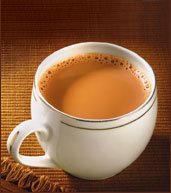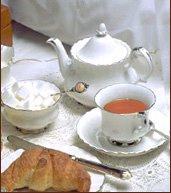 |
| Modern Tea Lounge |
 |
| Green Leaf |
 |
| The Brew |
 |
| Sakura |
Right from the beginning in China, it traveled to almost every country in this world. Going through Britain, America, Japan and India the flavorful leaf tells a tale of victory over all other conventional beverages.
Discovery
There are several stories and legends about the discovery and first sip of this wonder brew taken by human race. The origin is indicated to Chinese Emperor, right back to 2737 BC when it was consumed by locals because of immense medicinal and herbal freshness. The plantation and distribution passed through different dynasties in China such as Zhou, Han and Tang. This is the era whence drinking this hot beverage assumed a more common form percolating down to the lowest sections of society. Of course, the beverage was exposed much to Chinese, Indian and Japanese residents as it gained early popularity. This was acceptance as beverage and not a medicinal concoction any more.
In China and Japan the green leaf gained thrust with the creation of wide ranging varieties.Culture and trends also played a major role. In India the black leaf from Assam and Darjeeling Estates became highly popular.
Tea Journey to England
Since tea was then very common and limited to the Chinese regions, it was possibly in the seventeenth century when it reached England. This was in the kingship session of Charles II. Of course, tea was assumed to be a royal drink at that time. It was the power and virtue of East India Company which marketed tea to nations under its belt. However, the leaf was very expensive then and the British Government imposed hefty taxes on the consumption. This augured smuggling and black marketing which the government found difficult to control.
American Tea History
With the start of eighteenth century, special tanks, ships and containers were made to export huge quantity of leaf from China to European nations like UK. The famous Boston tea party made this leaf a symbol of protest. The destruction of leaf was done by those favoring independence from British rule in America .
With the start of eighteenth century, special tanks, ships and containers were made to export huge quantity of leaf from China to European nations like UK. The famous Boston tea party made this leaf a symbol of protest. The destruction of leaf was done by those favoring independence from British rule in America .
Why people love tea?
It was not the traditional trend of tea culture which attracted people at large but also the health benefits. The brew contained minerals and vitamins and antioxidants. These supplied the body with vital elements initiating a cheerful countenance and warm feel. The packaging created a transportation flexibility that lead to development of a wide range of leaves like green, white or black.
It was not the traditional trend of tea culture which attracted people at large but also the health benefits. The brew contained minerals and vitamins and antioxidants. These supplied the body with vital elements initiating a cheerful countenance and warm feel. The packaging created a transportation flexibility that lead to development of a wide range of leaves like green, white or black.























